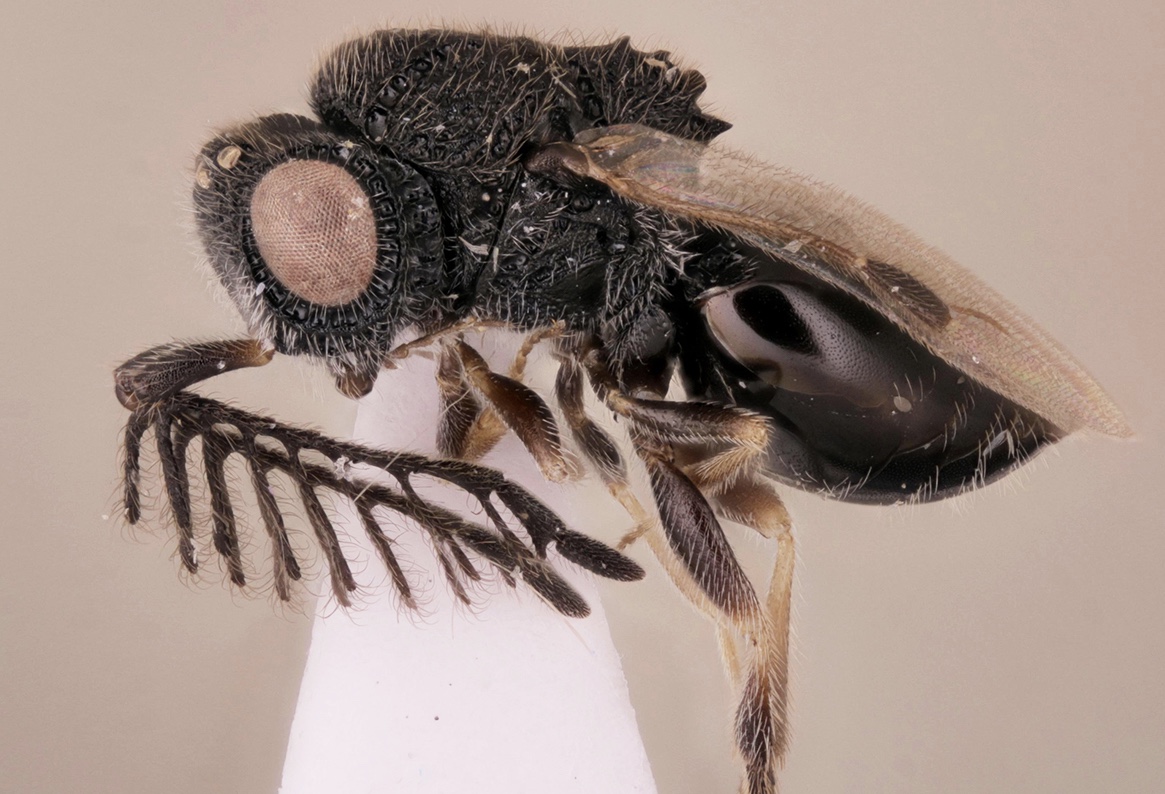New 'Slasher' Wasp Comes Equipped with Its Own Body Saw

Freddy Krueger, eat your heart out. A new species of parasitic wasp comes equipped with built-in saws, which the killer insect may use to slice its way out of its host's body.
In a new paper published Jan. 30 in Biodiversity Data Journal, researchers from Penn State and the Natural History Museum in London report the discovery of Dendrocerus scutellaris, a wasp less than 0.1 inches (3 millimeters) long that sports a series of jagged spines along its back.
Based on the wasp's anatomy, researchers suspect it is an endoparasitoid, a type of wasp that lays its eggs inside a host, often a caterpillar or adult insect. The eggs hatch, and the larvae feed on the host from the inside out. When the food supply runs out and the larvae mature into their adult forms, they chew their way out of the host. [Zombie Animals: 5 Real-Life Cases of Body-Snatching]
D. scutellaris lacks the pointy jaws that most endoparasitoid wasps use to gnaw their way out of their hosts. For that reason, the study authors argue that the saw-like structure on the wasp's back is its ticket to escape; when it's time to free itself, the wasp may rub the structure — called a mesoscutellar comb — against the inside of the host to slice its way out.
Researchers haven't seen this behavior in the wild; they discovered D. scutellaris in the collections of London's Natural History Museum. Some specimens of the species had been in storage, unexamined and unidentified, until they were loaned to Penn State's Frost Museum.
Some other species in the genus Dendrocerus have been discovered previously, and several are parasites of parasites that live inside aphids, the researchers wrote. Besides its saw-like comb, the new species also has dramatic branching antennae, which may help it sense mates or potential hosts.
Original article on Live Science.
Sign up for the Live Science daily newsletter now
Get the world’s most fascinating discoveries delivered straight to your inbox.

Stephanie Pappas is a contributing writer for Live Science, covering topics ranging from geoscience to archaeology to the human brain and behavior. She was previously a senior writer for Live Science but is now a freelancer based in Denver, Colorado, and regularly contributes to Scientific American and The Monitor, the monthly magazine of the American Psychological Association. Stephanie received a bachelor's degree in psychology from the University of South Carolina and a graduate certificate in science communication from the University of California, Santa Cruz.









